Physical Address
304 North Cardinal St.
Dorchester Center, MA 02124
Physical Address
304 North Cardinal St.
Dorchester Center, MA 02124
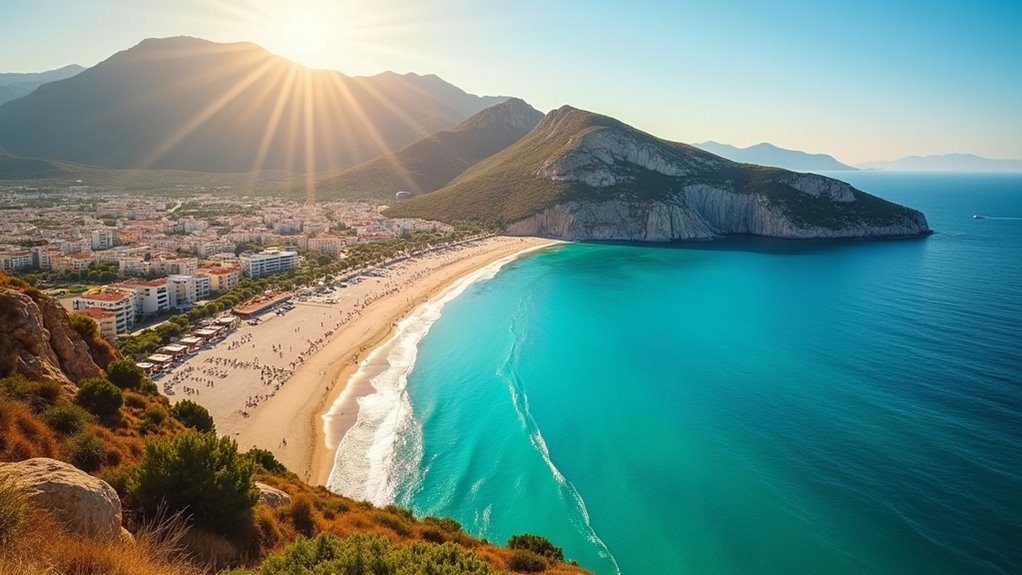
Torn between two Greek paradises? Discover which island matches your vacation dreams—Kos's ancient wonders or Kefalonia's untamed beauty.
Like Odysseus facing a choice between Scylla and Charybdis, you’re caught between two enthralling Greek islands: Kos and Kefalonia. You’ve heard enticing stories about both—Kos with its vibrant nightlife and historical treasures, Kefalonia with its dramatic landscapes and untouched beaches. They’re distinct destinations offering completely different experiences, and your perfect vacation hinges on matching the right island to your travel style. The decision isn’t straightforward, but understanding their unique characteristics will guide your choice.
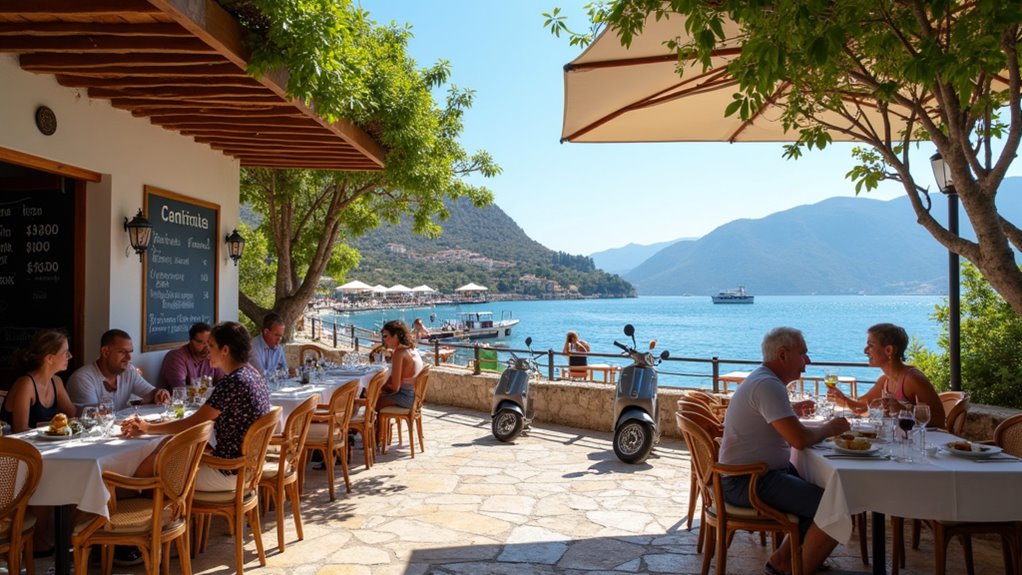
When planning your Greek island getaway, budget considerations between Kos and Kefalonia reveal notable differences worth exploring. Kos typically offers better value with budget travelers spending around €72/day compared to Greece’s national average of €77.
Explore Kos for exceptional Greek island value—budget travelers enjoy daily costs below the national average.
Accommodation costs start from €8-13 for hostels to €32+ for mid-range options on both islands. However, Kefalonia sees sharper price increases (20-50%) during July.
Food expenses are comparable, with taverna meals ranging €10-18 for lunch and €15-25 for dinner. Visiting local markets for self-catering can help reduce your daily food expenses significantly.
Transportation costs differ markedly—Kefalonia essentially requires a rental car (€25-50/day plus fuel) for proper exploration, while Kos offers more public transit options. Many travelers find the cultural allure of Greece worth every euro spent regardless of which island they choose.
Both islands use cash mainly at smaller establishments, so budget for ATM fees or bring alternatives like Wise cards.
Both Kos and Kefalonia offer stunning coastal landscapes, but they differ markedly in their beach characteristics and overall ambiance.
Kos features mainly flat, golden sandy beaches with shallow waters ideal for families—particularly at Tigaki, Mastihari, and Marmari. You’ll find well-developed amenities including sunbeds and tavernas, making for convenient beach days. Unlike the Ionian islands that surround Corfu, Kos is part of the Dodecanese island group, giving it a distinct character.
Kefalonia delivers dramatic scenic diversity with its limestone cliffs, sea caves, and pine-covered hillsides. Myrtos Beach exemplifies this with powdery white sand against turquoise waters, while Xi Beach showcases unique white clay formations. Lourdas beach provides visitors with a relaxed environment perfect for those seeking a slow-paced holiday experience by the sea.
While Kos beaches tend to be busier with organized water sports and easy access, Kefalonia offers more secluded coves requiring longer drives but rewarding you with exceptional water clarity, vibrant marine life, and considerably fewer crowds.
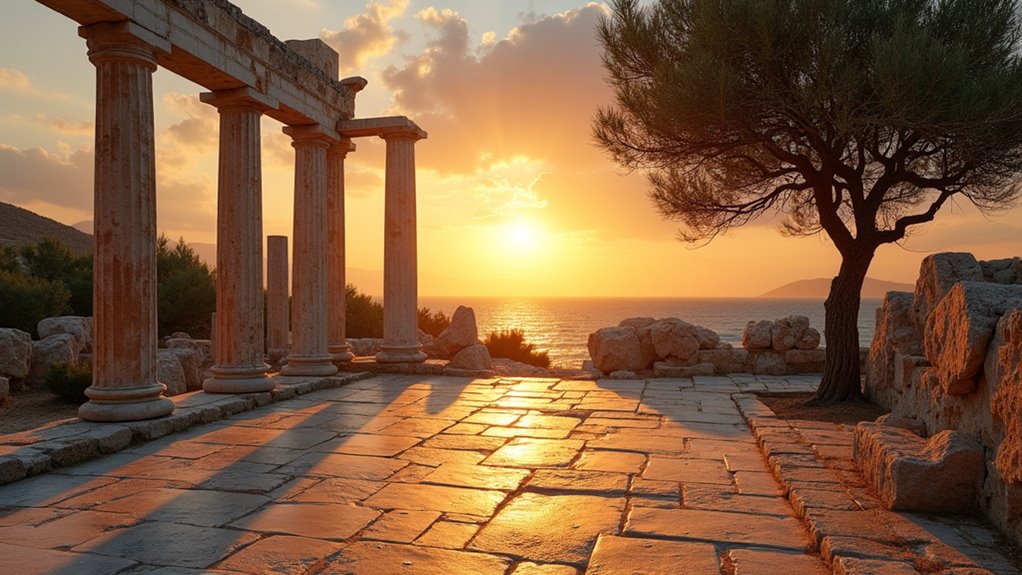
While travelers seek Greek islands primarily for beaches, both Kos and Kefalonia offer fascinating historical attractions that shouldn’t be missed. Kos showcases impressive Roman influences with its Casa Romana and ancient Odeon, while Kefalonia boasts Venetian architecture and scattered ruins. For those seeking a comprehensive cultural experience, Athens’ must-see attractions provide remarkable historical context for these island destinations.
For history buffs deciding between these islands, consider these key differences:
Having explored the historical treasures of both islands, you’ll need to contemplate how you’ll get around to experience them. Kos offers a more developed public transport network with frequent bus services connecting major attractions, ideal if you’re avoiding car rentals.
Kefalonia’s mountainous terrain makes a rental car almost essential, though you’ll pay €40-60 daily versus €30-50 in Kos. The roads in Kefalonia demand sturdier vehicles, particularly around Mount Ainos and narrow village lanes.
Both islands have metered taxis, but Kos’s flat coastline also makes cycling viable along routes like Tigaki to Marmari. Kos also boasts vibrant nightlife spots that are easily accessible via the island’s efficient transportation system.
For island-hopping, Kos provides more frequent ferry connections to neighboring Dodecanese islands, while Kefalonia offers fewer weekly services to Zakynthos and the mainland. If you’re planning to visit both islands during your Greek vacation, be prepared for a 21-hour journey when taking the most economical bus and ferry combination route.
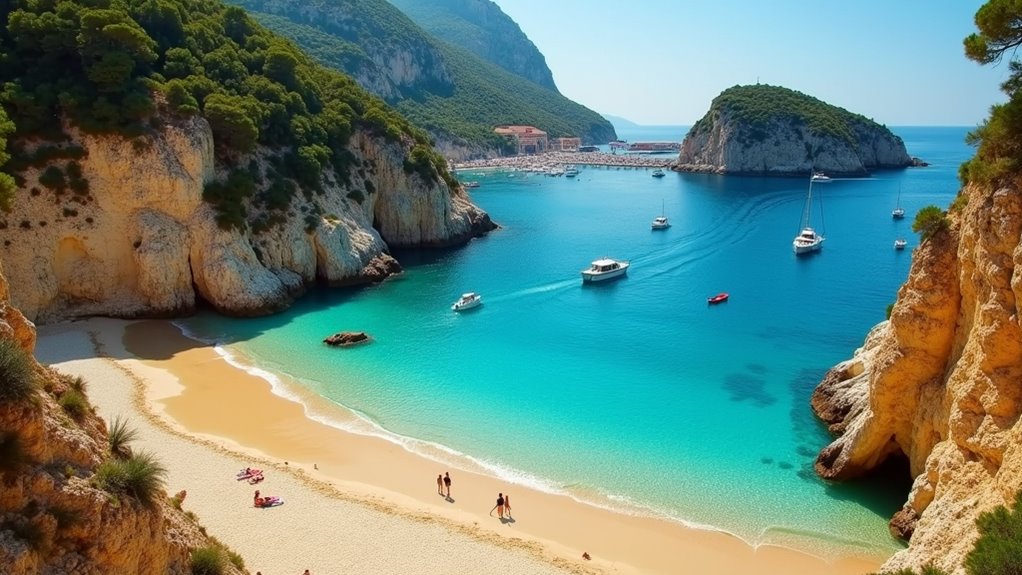
The timing of your visit considerably affects the experience you’ll have on either island. Kos, being smaller (112 sq mi), concentrates travelers in specific zones, creating higher density during July-August, especially in Kos Town and Kardamena.
Kefalonia’s larger size (304 sq mi) naturally disperses visitors across its attractions, maintaining a more authentic, uncrowded atmosphere even in peak season. Both islands experience a Mediterranean climate with hot, dry summers and mild, wet winters, which significantly influences tourism patterns throughout the year.
If you’re seeking alternatives with equally stunning beaches and authentic Greek atmosphere, Lefkada Island offers a perfect blend of natural beauty and fewer crowds than more popular destinations.
For the best experience:
Adventure seekers and outdoor enthusiasts will find both Kos and Kefalonia offer distinctive recreational landscapes that cater to different activity preferences.
Kos excels in cycling with its flat terrain and dedicated bike paths. You’ll enjoy its sandy beaches perfect for swimming and water sports, plus archaeological sites like the Asclepeion for historical walks. The island also features water parks and organized water sport facilities.
Pedal through Kos’s flat landscape on dedicated paths, then dive into water sports or explore ancient sites between refreshing swims.
Kefalonia shines with its varied hiking trails, particularly around Mount Enos. You can explore unique geological formations and caves like Dafnoudi, or discover secluded coves by kayak. Its waters are ideal for sailing and fishing excursions. For those seeking nighttime adventures after daytime exploration, nearby Ios island offers vibrant nightlife options worth a short trip from the mainland. While activities in Kefalonia tend to come with higher price tags, the premium experiences often justify the additional cost.
Both islands provide diving centers, equipment rentals, and guided tours, though Kefalonia offers more dramatic natural landscapes while Kos provides more accessible recreational infrastructure.
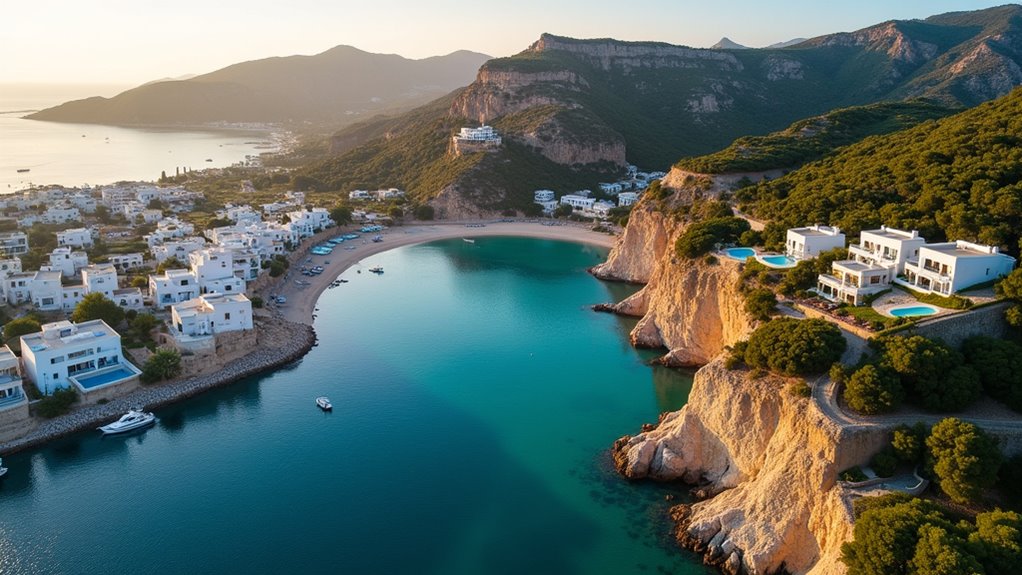
Finding suitable accommodations plays a crucial role in shaping your island experience, with Kos and Kefalonia offering distinctly different options to match your preferences and budget.
Kos features more budget-friendly hotels and all-inclusive resorts, particularly in lively areas like Kos Town and Kardamena. Travelers seeking luxury can enjoy the Ikos Aria resort, rated an impressive 4.9/5 with over 3,000 positive reviews.
Kefalonia excels in luxury villas and boutique accommodations, especially in picturesque villages like Fiscardo and Assos. For couples celebrating a special occasion, Kefalonia offers some of Greece’s best honeymoon destinations with romantic, secluded settings.
Ultimately, you’ll find your perfect Greek paradise based on your priorities. Choose Kos for vibrant nightlife, budget-friendly options, and convenient transportation. Pick Kefalonia for dramatic landscapes, authentic villages, and peaceful escapes. Both islands offer beautiful beaches, opulent history, and Mediterranean charm—just with different personalities. Consider your ideal vacation pace, preferred activities, and budget to make the choice that’s right for you.